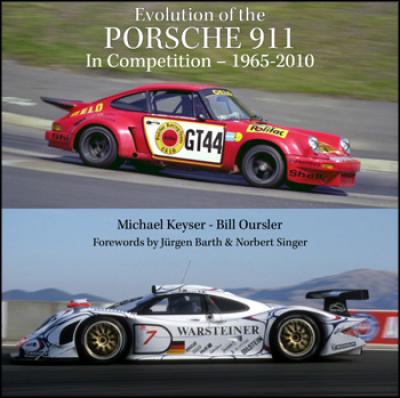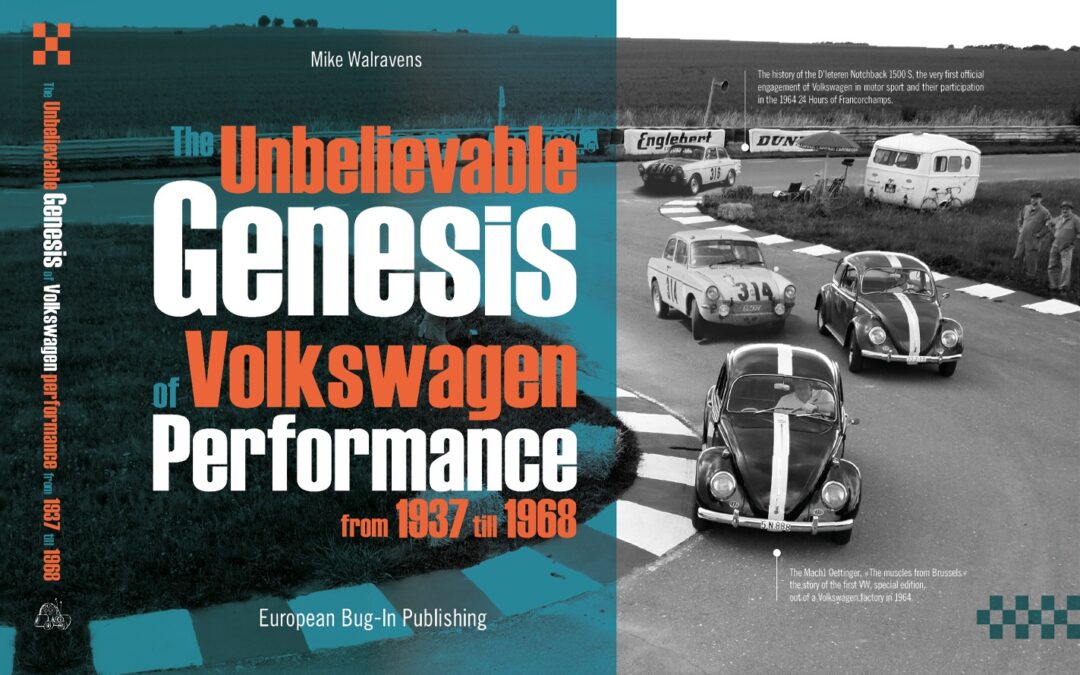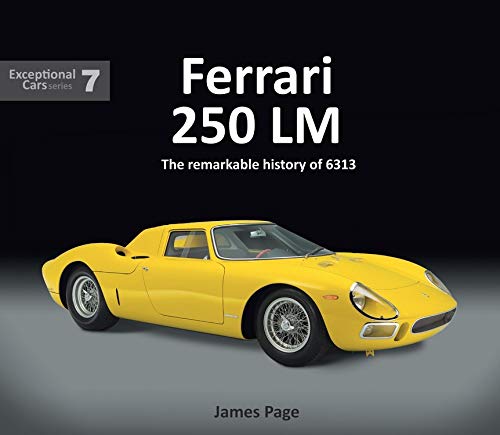
SOLD OUT
This is the story of a Grand Prix formula that no British constructor wanted but which became one that they would almost totally dominate. It has remained largely overlooked due to the perception that the cars were underpowered and hence unspectacular. Such a perception ignores the significant technical developments that took place that are now taken for granted, such as monocoque chassis construction. It saw the career of Stirling Moss come to a premature end but in his absence the rise to prominence of a new breed of British drivers in Jim Clark, Graham Hill and John Surtees.
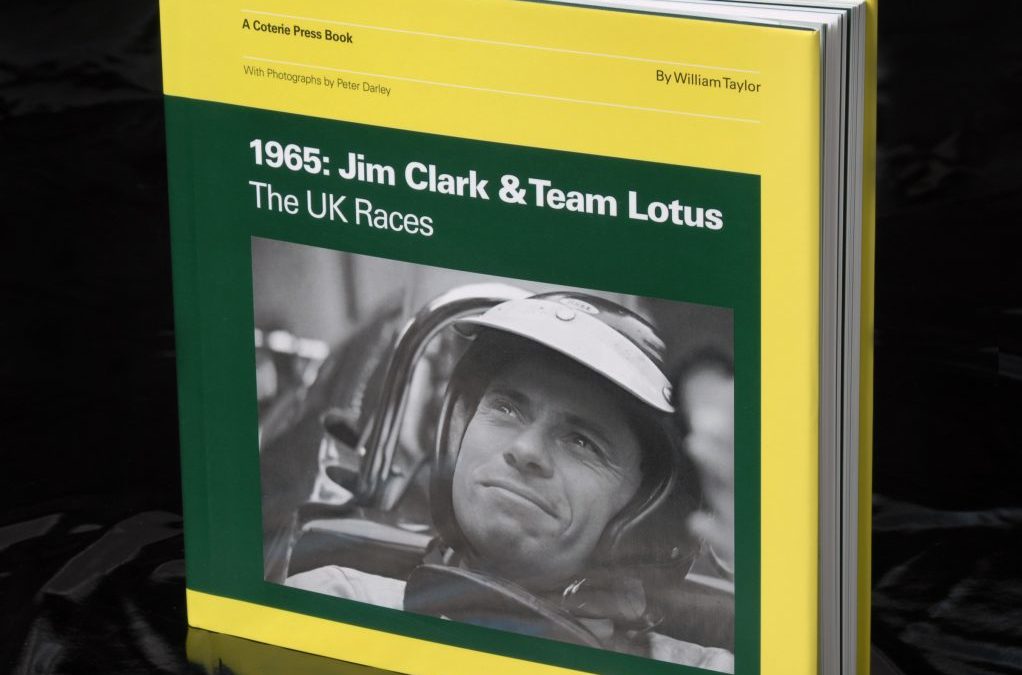
Providing an evocative snapshot of the cars and drivers competing in a memorable season of British motorsport 1965: JIM CLARK & TEAM LOTUS THE UK RACES details the major races including saloons and single-seaters, for Team Lotus, over a momentous year. It sees the legendary drivers such as Stewart, Hill, Gurney, Brabham, Surtees and McLaren competing hard against the formidable talent of Team Lotus and works supported drivers Clark, Spence, Sears, Whitmore, Rodriguez, Hart, Revson and Parsons at the major UK race Circuits. Illustrated with nearly 200 previously unseen black & white photographs from the Peter Darley Archive, this 208-page 10×10 inch hardback book captures the unique atmosphere of the time. With contributions from Jack Sears who wrote the foreword, Sally Swart (Stokes), Bob Dance and David Hobbs, this is not just an invaluable record of Jimmy’s early life and times, but also a uniquely colourful depiction of an important period in British motor racing history.

This is the story of the Ford small block Fairlane V8 engine’s rapid evolution from passenger car engine to highly successful racing engine and the victories it fueled for years afterwards. Initially, in May 1960, a team of nine engineers, lead by George Stirrat, designed a lightweight, all cast-iron, compact, reliable and durable power-plant for passenger cars, but following its introduction in July 1961, Ford’s engineers quickly realized its potential benefits if modified for racing applications. Within three months, the capacity had been increased from 221ci to 260ci, and by early 1962 Carroll Shelby had fitted a High Performance 260ci version in his AC Cobra. Subsequently, the original design team began work on a second capacity increase, to achieve a High Performance 289ci unit; within three months the standard 289ci became available. Carroll Shelby went on to win the 1965 World Sports Car Championship using a HP-289ci. Aluminium block and cylinder head pushrod versions, designed in late 1962, had been constructed by early 1963, in preparation for that year’s Indianapolis 500, and the DOHC four-valve per cylinder 255ci raced in the 1964 and 1965 Indy 500, winning the latter outright. The 302ci replaced the 289ci for the 1968 car model year and, at Le Mans in 1968 and 1969, GT40 cars won outright using this variant of the small block. In 1965, 1966 and 1967, HP-289ci-powered Mustangs won the SCCA B-Production Championship and 1966 and 1967 Trans-Am Championships. A Bud Moore Engineering Boss 302 Mustang won the 1970 Trans-Am Championship. Ford invested much time and expertise into its racing activities in the 1960s, and there’s little doubt that the V8 Small Block engines took the company to the forefront of the racing world, until it withdrew from the sport in 1970.
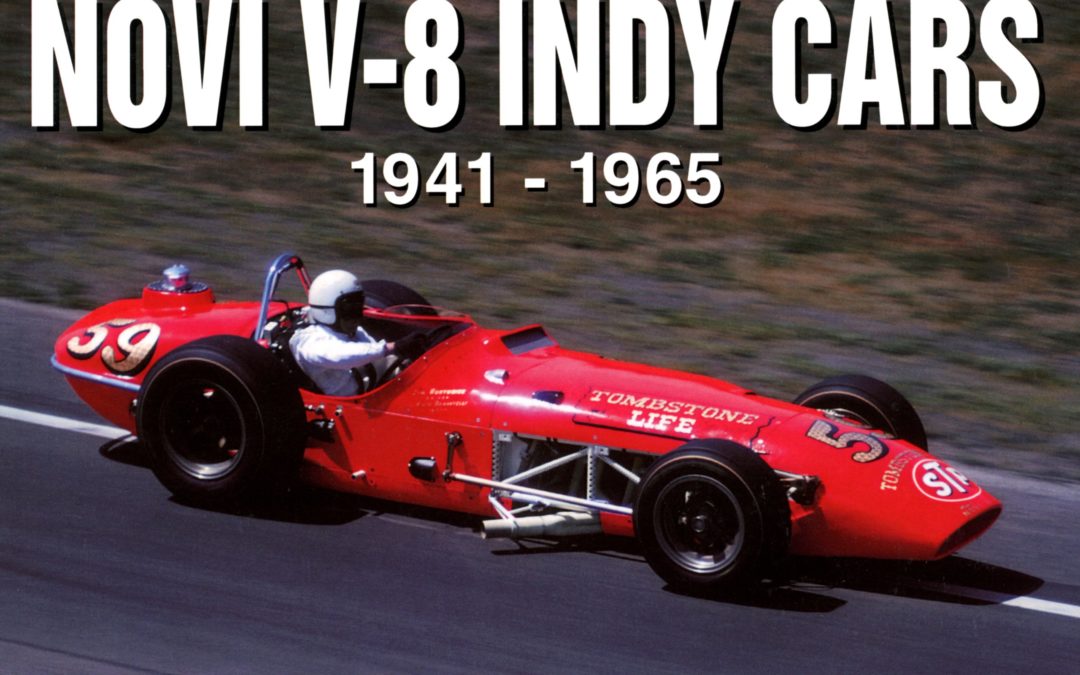
Back In Print! Novi V-8 Indy Cars 1941-1965 (Ludvigsen Library Series)
By Karl Ludvigsen. Few cars of any kind have exuded the charismatic appeal of the great Novi V-8 racing cars that competed at Indianapolis from 1941 (the engine only) to 1965 – an incredible record of longevity and persistence. With its centrifugally-supercharged four-cam V-8 engine the Novi was a power prodigy in all its incarnations.
First a front-wheel-drive car, it earned a reputation for wicked handling by killing two of its drivers. But the Novis were so fast – so often- that more racers were always willing to take them on. Though a Novi never won at Indy, these magnificent cars are fondly remembered by all enthusiasts.
From his Ludvigsen Library, Karl Ludvigsen has selected a splendid collection of photographs displaying these grand cars. Andy Granatelli writes a moving introduction about the Novis he rescued from the racing scrap heap. 10.25″” wide x 8.5″” tall Landscape.
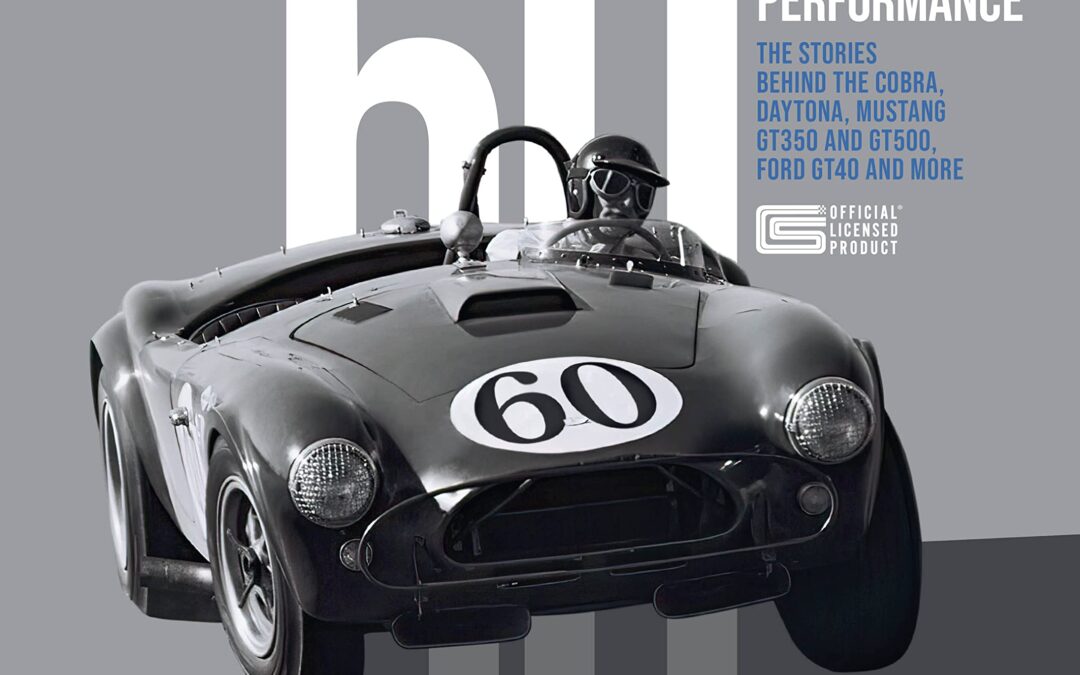
Six Decades of Shelby performance—from the first Shelby AC Cobra to today’s Mustang Shelby GT500!
A bad heart forced Carroll Shelby, one of the top racing drivers of all time, to retire in 1960. But that didn’t stop the lanky Texan from continuing to make history. He launched Shelby American in 1962 with the creation of the brilliant Ford-powered AC Cobra, soon to dominate both U.S. and international sports car racing. Shelby’s winning ways soon led to Ford seeking Shelby’s team of “hot rodders” help to make the Ford GT program a success. It worked. Shelby and Ford soon stunned the motorsports world by winning Le Mans and dominating other venues from 1966 to 1969 with the GT40. Fifty-three years later the legendary first Le Mans win of 1966 would form the basis for the acclaimed film Ford Versus Ferrari. As if the Cobra, Daytona Coupe, and GT40 were not enough, this small team of hot rodders, fabricators, and race mechanics also created the Shelby Mustang GT350 in 1965, and the GT500 two years later. Shelby American was nothing short of lightning in a bottle from 1962-1970.
Shelby American 60 Years of High Performance covers all of these early triumphs, following the proceedings from a small shop in Venice, California, to sprawling digs at LAX all the while developing new road cars, running a top race team, and giving privateer racers the cars they needed to win. Get to know Shelby, as well as the innovators who surrounded him, including designer Peter Brock, genius engineer Phil Remington, “Mr. GT350” Chuck Cantwell, and a roster of top drivers that included Ken Miles, Bob Bondurant, Dan Gurney, Bruce McLaren, Denny Hulme, A.J. Foyt, Mario Andretti, and more.
Authors Colin Comer and Rick Kopec, leading Shelby historians, follow the Shelby story through Carroll’s post-Ford relationship with Dodge, including his roles in the giant-killing, pocket-rocket Shelby Charger, GLH (“Goes Like Hell”), and GLH-S cars along with a slew of other Shelby-ized machines including his role in the birth and development of the menacing Dodge Viper.
The story of the late Carroll Shelby and the company he founded is a classic tale of ingenuity, grit, and perseverance. Illustrated throughout with rare period imagery and modern color photography, Shelby American 60 Years of High Performance is the ultimate tribute to Shelby American and the team that made it all happen.
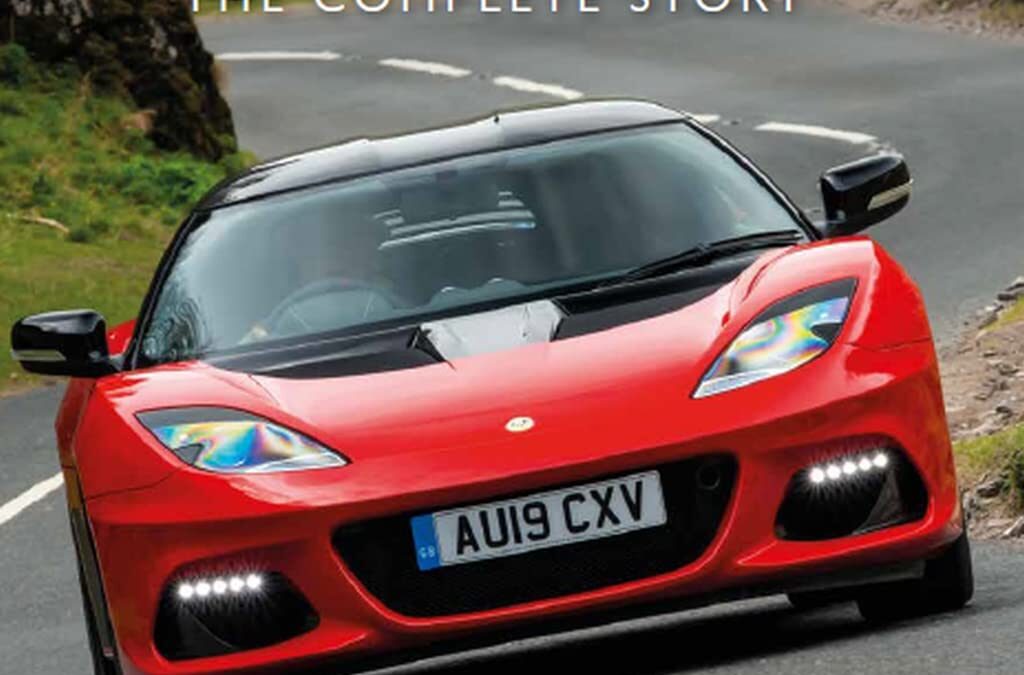
The story of the Lotus marque encompasses ongoing technical innovation on road and track, from the Mark 1 in 1948 to the World’s most powerful electric hypercar – the Evija – in 2021. Founded in 1952 from Colin Chapman’s hobby, Lotus flourished by producing aerodynamically brilliant lightweight sports-racing cars, progressing into Formula 1 in 1958. Jim Clark and Team Lotus won the 1963 and 1965 F1 World Championships for Drivers and Constructors, as well as the Indianapolis 500. Jochen Rindt won the 1970 World Championship posthumously for Gold Leaf Team Lotus, and in 1972, Emerson Fittipaldi was F1 World Champion driving the JPS Type 72, with the Team winning the Constructors’ prize in 1972 and 1973. Mario Andretti won the F1 World Championship for JPS Team Lotus in 1978 but, surprisingly, this proved to be their last of seven F1 World Championship wins. On the road, the Elite showcased the brand from 1957. Next, the Elan was a fine-handling fibreglass-bodied sports car, while the Seven provided exhilarating motoring for DIY enthusiasts. The 1963 Lotus Cortina was a fast road car and a success on track. The Elan Plus 2 was built alongside the Elan two-seater and Europa, and in 1974 the road car range went upmarket, powered by Lotus’s own engines, with the Elite Mk 2 and Éclat, and the mid-engined Esprit produced between 1976 and 2004. Tragedy struck with the sudden death of Colin Chapman in December 1982, aged 54. General Motors acquired Group Lotus in 1986, selling up to Romano Artioli’s Bugatti in 1993, enabling the ground-breaking Elise to launch in 1996. Ownership of Group Lotus passed to Malaysian car maker Proton, and in 2000, the Series 2 Elise and the Exige were released, maturing gradually over the next twenty years. The Toyota V6-powered Evora was announced in 2006. In 2017, Group Lotus was acquired by the global automotive company Geely, ushering in a fresh, financially secure era. Launched in 2020, the 2,000bhp all-electric Evija became the new Lotus flagship. Lotus blossoms anew.
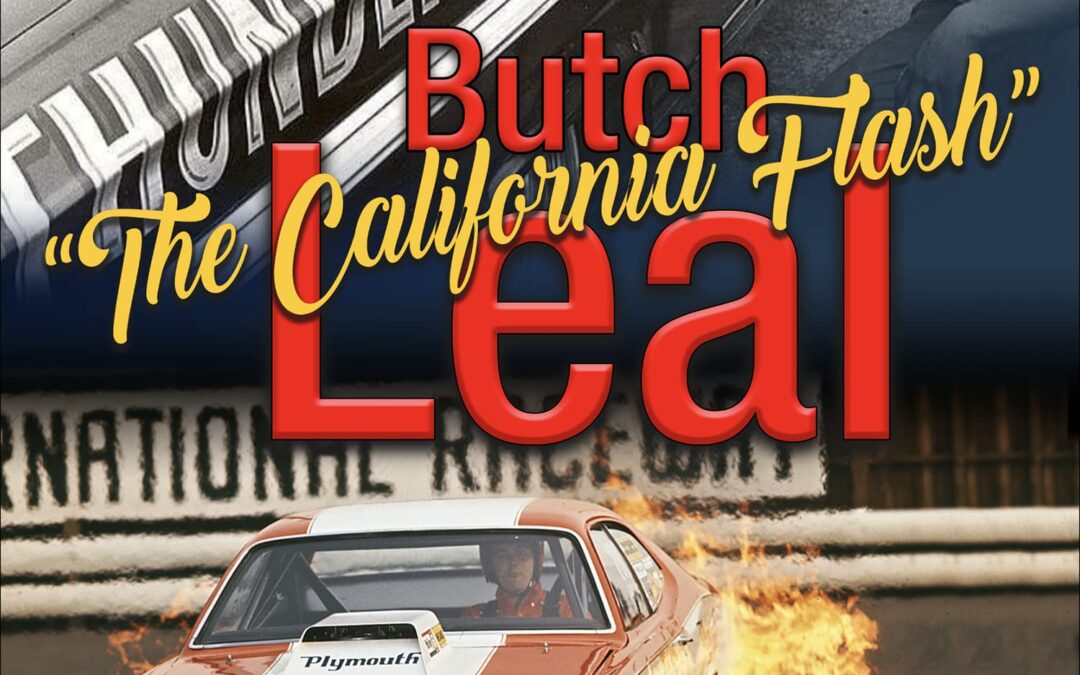
Check out the first ever biography on the popular drag racer, Butch “The California Flash” Leal.
Born and raised in central California, Larry “Butch” Leal was obsessed with cars from a very early age. What began with field cars turned into hard work and new Chevrolets. This took place when the golden era of drag racing was in its infancy, and Leal joined with enthusiasm. He performed well at the track with his early Chevys and had an impressive number of wins before he was out of high school. His success brought him plenty of attention and collaboration with other big names in the sport.
In 1963, GM pulled out of the sport on an official basis. As a result, Butch (at age 19) teamed up with Mickey Thompson and joined the Ford camp, securing a ride with the factory team and its new Thunderbolts for 1964. After his success that season, including winning the Super Stock (S/S) class at the 1964 NHRA US Nationals in Indianapolis, Chrysler came calling, and Butch signed on to race the new altered-wheelbase cars in match races for 1965, as the NHRA did not have a class for these new “funny” looking cars. While Leal dabbled again with Ford and Chevrolet later, his relationship with Chrysler lasted well into the following decades, running both Funny Cars and Super Stockers.
Penned by talented automotive historian Bob McClurg, who was there for it all, and featuring full collaboration with the book’s subject, Butch “The California Flash” Leal covers the span of his fascinating career during arguably the most interesting era in drag racing history. Butch was an 11-time NHRA champion and 4-time recipient of Car Craft magazine’s All-Star Driver of the Year award in a career that spanned the 1960s through the 1990s. It’s all here, the events, great vintage photography, and the stories from one of the best storytellers the NHRA has ever known. Add this entertaining volume to your drag racing library today.
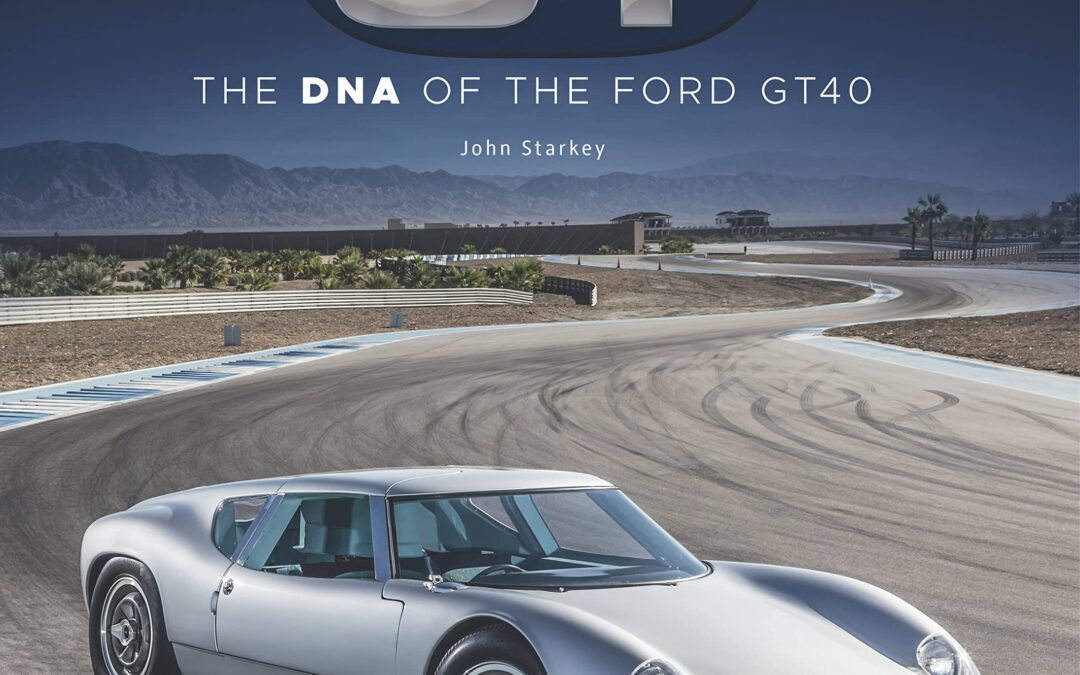
The 1963 Lola Mk VI GT was the car that inspired the Ford GT40 and then the Lola T70, both of which today are seen as true classic racecars.
This book describes how all that happened, concentrating particularly on Allen Grant’s Lola Mk VI, one of just three built, which he bought in 1965 and still possesses today. The book also contains never seen before photos from the Ford Archives.
John Starkey, an established automotive author and racecar consultant, has previously authored books about the history of the marque and the famous T70 racing sports cars, one of which he used to race himself.
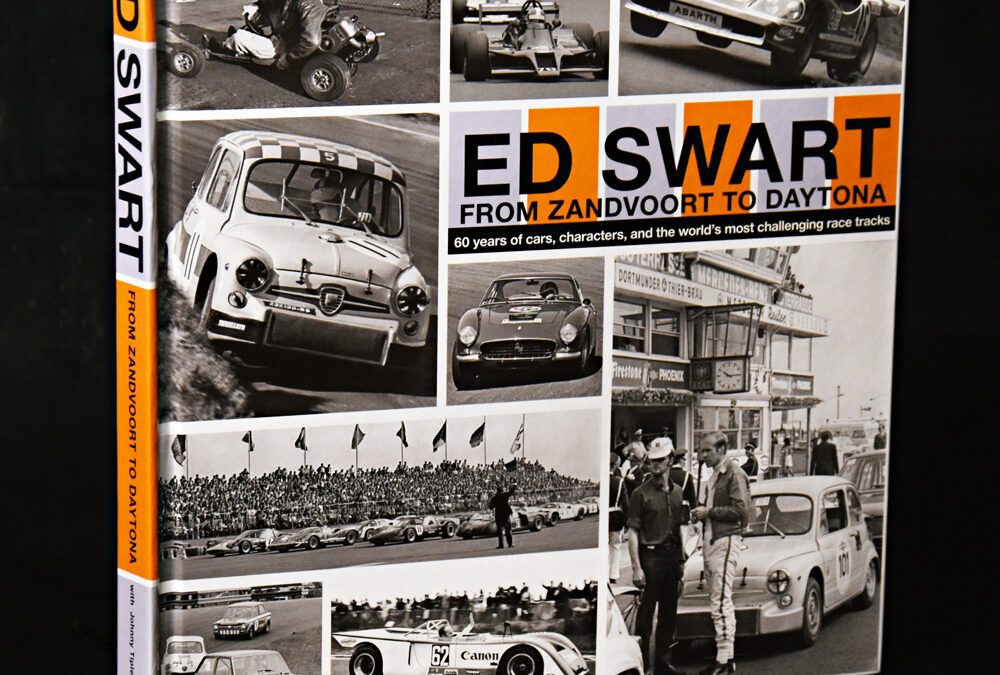
Anyone who drove racing cars in the 1960s and ’70s has a wealth of stories to tell, and Ed Swart is no exception. Having competed at international level in touring cars – winning the 1965 European Touring Car Championship Division 1 in the process – and been a front-runner in the European 2.0-litre Sportscar Championship in the late ’60s and early ’70s, as well as helming GTs, sports-prototypes and running an international race circuit – Zandvoort, no less – Ed Swart has more to say about the period than most people. And whilst most drivers from that era retired long ago, Ed has kept on keeping on racing through historic racing. This is the fascinating account of his life, immersed continuously in top-line motor sport.
Just like Sir Stirling Moss did back in the day, Ed Swart scrupulously kept a diary of his racing actions, based on scrapbooks of press clippings, which provides us with an unparalleled record of the crowded schedule of the pro-am racing circus during that heady decade and a half.
This fascinating 10×10-inch, 192-page hardback book, contains over 300 photographs and tell the story of racer Ed Swart who started his motorsport career rallying at the age of 18 and was soon involved in the early days of karting. As Ed’s father was a distributor for Fiat, based in the Hague, early on Ed was obliged to race only Fiat cars, under the title Scuderia Auto Swart – or Team S.A.S, but after he spent a year in Italy at the Fiat school and Abarth factory, he started racing Fiat-Abarth production cars. Ed raced for five years with the Works Abarth team, winning the 1965 and 1968 class Championships. In 1969, when Carlo Abarth produced a genuine 2-litre sports car, Ed bought one to compete in the FIA 2.0-litre Sports/Prototype Championship. After the Abarth company was sold to Fiat and no longer making race cars Ed became a true Chevron fan and has raced them ever since, both on a professional basis in Europe and then after he moved to the USA in historic racing.
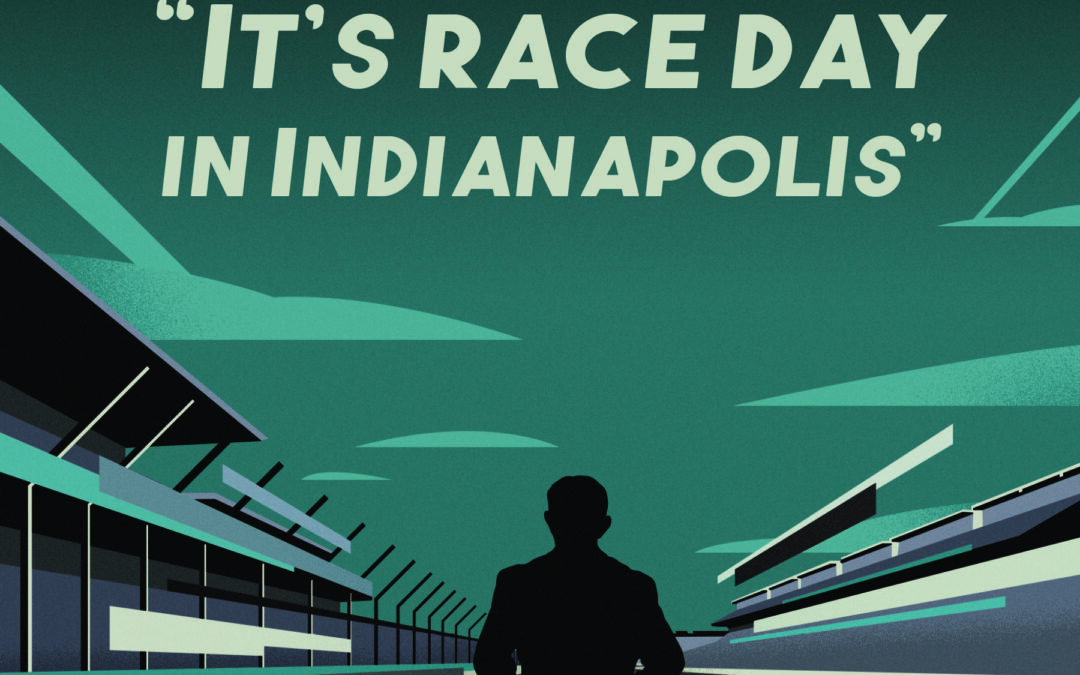
Live from the broadcast booth, Paul Page captured the excitement of 27 Indy 500 races, first as the “Voice of the Indy 500” for the radio broadcast and then as chief announcer for the ABC telecast. From his first race as a pit reporter to his semi-retirement in 2016, generations of fans have witnessed the Greatest Spectacle in Racing as told by Paul Page.
In a life uniquely shaped by the Indy 500, Page fell in love with racing and the Speedway as a teenager, and it became his obsession. After receiving his first press pass in 1965, Page became a fixture in Gasoline Alley, and a trusted friend and confidante to generations of drivers, mechanics and owners.
His rise to fame followed a relentless pursuit of his dream, overcoming many obstacles along the way: dropping out of college, the suicide of his mentor, and recovering from a harrowing helicopter crash. No matter the setback, he used every opportunity to learn the trade of broadcast journalism and the sport of motor racing.
In a career that spanned ABC, NBC, CBS, and ESPN, Page wore a headset for every imaginable race and contest: from Indy cars to drag racers, from the Olympics to the America’s Cup, and from the X-Games to Nathan’s Hot Dog Eating Contest. Page weaves the history, tradition, and lore of the Indianapolis Motor Speedway as he traces across six decades. He introduces the great personalities of the Speedway with many candid moments. He tells great stories from broadcast booths around the world, and slices of life as a young reporter in Indianapolis.
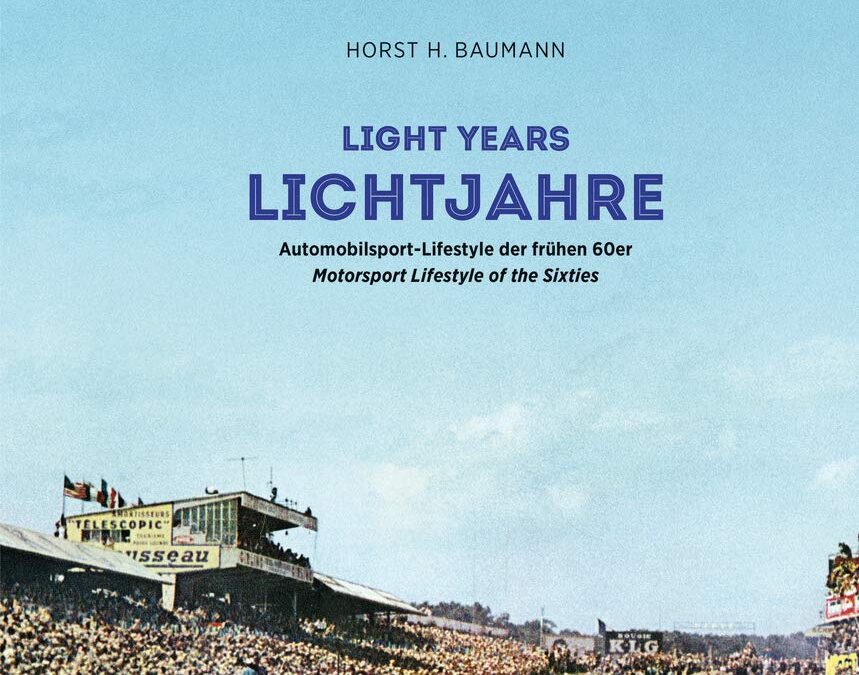
- Illustrated book about the golden years of Formula 1, limited to 999 copies
- Impressive, never before seen photos by celebrated motorsports photographer Horst H. Baumann
- Grid girls, driver stars, car legends – pictures of cars, people and stories
- Fascinating recordings of racetracks from around the world, such as Nürburgring, Le Mans, Spa and Zandvoort
Top racing drivers, legendary cars, and thrills – the 1960s were the golden age of motorsport. Up close: the photographer Horst H. Baumann and his camera. He was one of the first to record the Formula 1 races in color photos and published his works in 1965 in the cult book The New Matadors.
Close to it. Full risk. Full of emotion. That was the credo of the celebrated sports photographer. To this day, his vintage photos impress with their breathtaking proximity to the subject and the immediacy of the moment. Captured here is not only the Formula 1 races and their winners, but also what is hidden from the normal spectator, on and next to the race track. Lichtjahre combines the entire spectrum of Baumann’s work.
Text in English and German
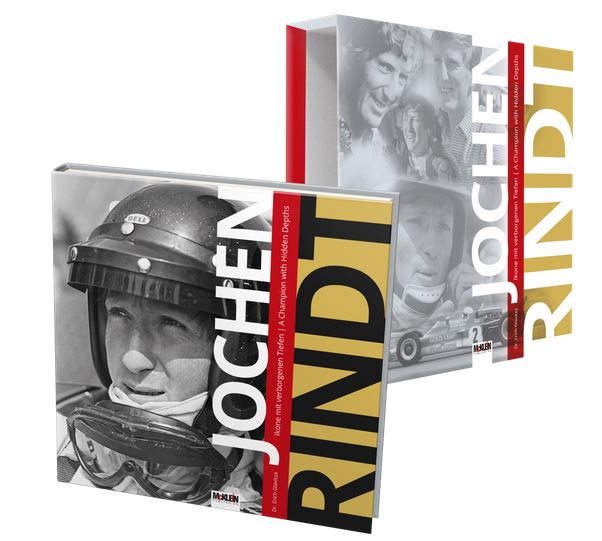
IN STOCK!
It is September 5th, 1970. Austria has lost a national hero. Jochen Rindt is dead. The 1965 Le Mans winner who drove his way from airfield races to Formula Two and right on to Formula One, where he was to be crowned champion posthumously, was a dazzling personality. Born in Germany and raised in Austria, he knew how to polarize relationships. The book portrays his sheltered childhood with his grandparents after he lost his parents in the war, the onset of puberty, his rapid yet stormy career, and its tragic end in Monza. This is a portrait of a champion with hidden depths.
Dr. Erich Glavitza, journalist, author, racing and stunt driver and, on top of that, a PhD in philosophy, knew Rindt well and, in his well-known relaxed manner, has painted this picture of Jochen Rindt, that is as compelling as it is insightful and sensitive. He describes Rindt’s impetuous character and the little-known, completely different relationship he had with his half-brother, with whom Glavitza spoke at length for this book. Finally, Erich Glavitza analyses in detail the fatal accident at Monza with the F1 Lotus.
This is a comprehensive study of Jochen Rindt, the man and the racing driver, which is richly illustrated with private photos and with racing pictures some of which have never been shown before. These include ones from Alois Rottensteiner, who was also close to Rindt and part of the racing scene of the 1960s and 1970s. The preface is by Bernie Ecclestone, Rindt’s manager and friend.
To mark the 50th anniversary of the racing driver’s death, McKlein is presenting this 400-page large-format biography in a noble design and slipcase.
29 x 29 cm, hardcover in a slipcase
Pages: 400
Pictures and illustrations: 99 in colour and 304 in black-and-white images
Text English and German

The life of Derek Bennett and the success of Chevron Cars are inextricably entwined in the Chevron Story. After years eking out a living mending cars in back street garages, Derek rose to become one of the world’s leading builders of racing cars. Chevron is the fairy tale story of how he did it.
Stars such as Alain Prost, Niki Lauda, Brian Redman, James Hunt, Keke Rosberg, Nigel Mansell, Graham Hill, Peter Gethin and Jody Scheckter all drove Chevrons. In his book “Chevron – The Derek Bennett Story” – David Gordon explains how they got on.
After travelling many thousands of miles to trace the people who knew and worked with Derek, motor racing journalist David Gordon tells the Derek Bennett story and that of his brainchild Chevron Cars, charting the contributions of the many people who played a part in the company’s meteoric rise to success, and relating why it all happened the way it did.
Derek Bennett designed and built successful racing cars for 13 years from 1965 until his untimely death in 1978, but another four decades later the appeal of those cars shows no sign of waning.
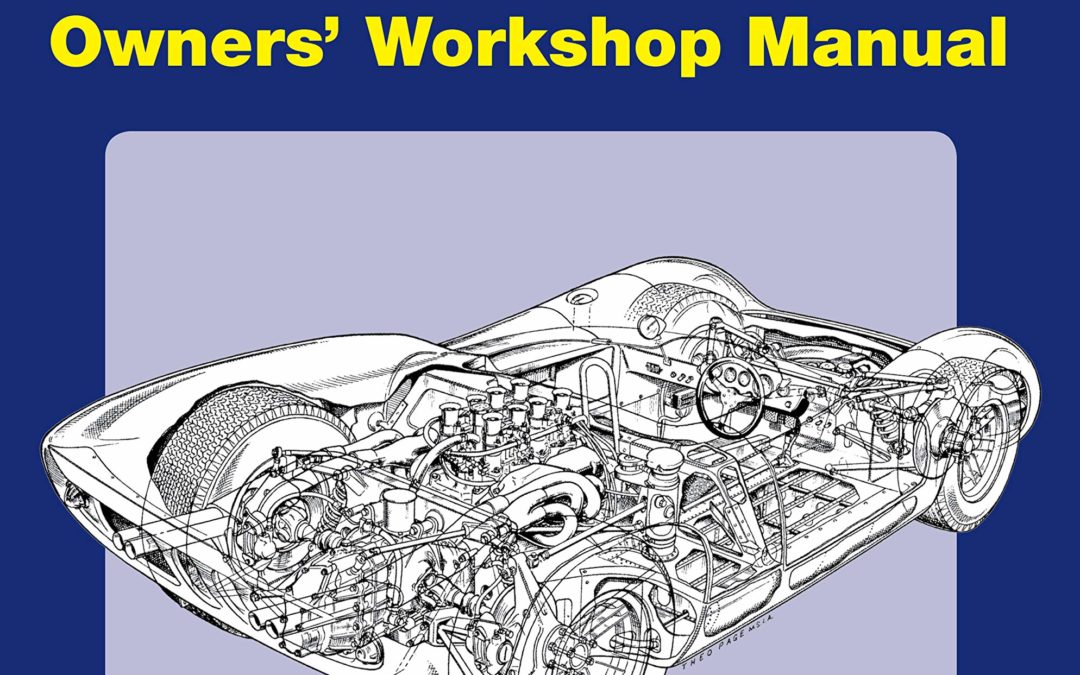
An insight into the design, engineering, maintenance and operation of Lola’s legendary sports racing car
The Lola T70 was developed in 1965 for sports car racing – Lola built the chassis, which were typically powered by large American V8 engines, predominantly Chevrolets and Fords. The T70 was prolific throughout the mid- to late-1960s, and over 100 examples were built in three versions – both open-topped and coupé models. The first successes for the T70 were in the US, and in 1966, the T70 dominated the Can-Am championship, winning five of the six races in the series – with John Surtees becoming champion in a Chevrolet-powered example. In 1968, T70s finished 1 – 2 in the Daytona 24 Hours, and the T70 was highly successful in the domestic UK and European championships, winning regularly. Today, Lola T70s are regular competitors on the historic racing scene, and examples are highly sought after by collectors. This Lola T70 Owner’s Workshop Manual looks at the design, evolution, anatomy and operation of the T70.
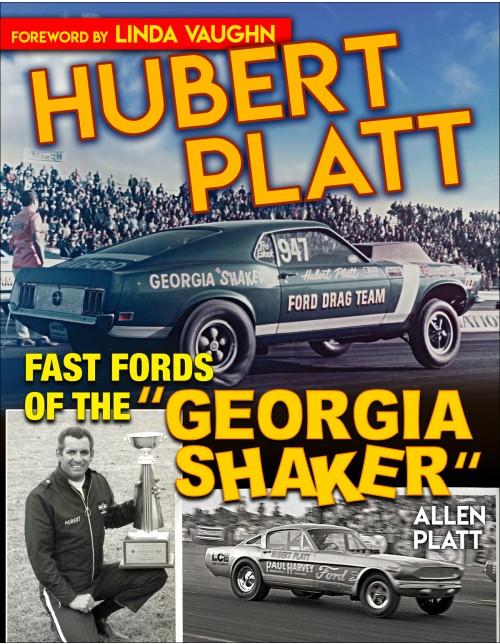
Webster’s Dictionary lists the term showman as “a notably spectacular, dramatic, or effective performer.” In the art of drag racing, Hubert Platt checked all boxes. Known as the “Georgia Shaker,” Platt cut his motoring teeth on the long straightaways and twisty back roads of South Carolina while bootlegging moonshine. After a run-in with the law in 1958, Platt transferred his driving skills from illegal activity to sanctioned drag racing and began one of the most dominant runs in drag racing history until his retirement in 1977.
After stints in 1957, 1938, and 1962 Chevrolets, Platt’s next ride was a Z11 Impala, which carried his first “Georgia Shaker” moniker. Once Chevrolet pulled out of sanctioned racing, Platt found a new home with Ford for 1964 and remained there until he hung up his helmet. Some of the cars he campaigned became icons in their own right. His factory-backed and personal machines included a 1963 Z11 Impala, 1964 Thunderbolt, 1965 Falcon, 1966 Mustang Funny Car, 1967 Fairlane 427, 1968-1/2 Cobra Jet, 1969 CJ Mustang, 1970 427 SOHC Mustang, and 1970 Boss 429 Maverick.
A 1986 NHRA Hall of Fame member, Platt’s lasting legacy on the sport can’t be denied. Whether he was launching his Falcon with the door open, conducting a Ford Drag Team seminar, or posting low E.T. at the 1967 US Nationals in his Fairlane, Platt’s imprint on drag racing was all-encompassing. His son and biggest fan, Allen Platt, shares his dad’s iconic career in, Hubert Platt: Fast Fords of the “Georgia Shaker”!

Experience the full career of racing legend Mario Andretti as recounted by the champion himself. The core of this biography is presented via interviews Andretti has given over the decades and expertly brought together by author Mario Donnini. Anecdotes, testimonials, quips, and jokes come together to give new light on motor racing history.
Mario Andretti is a legend in two worlds: Europe and the United States. Some of his accolades and championships include:
-1978 Formula 1 World Champion,
-1969 Indianapolis 500 Victor
-1965, 1966, 1984 IndyCar Champion
-1967, 1970, 1972 12 Hours of Sebring Victor
-24 Hours of Daytona Victor, and many other endurance classics
What counts most is that Mario is the last F1 world champion whose mother tongue is Italian, even if he did win the title when he was an American citizen. The volume contains hundreds of pictures–many of them previously unpublished–which illustrate the long and unrepeatable career of an all-time authentic icon of motor sport.



